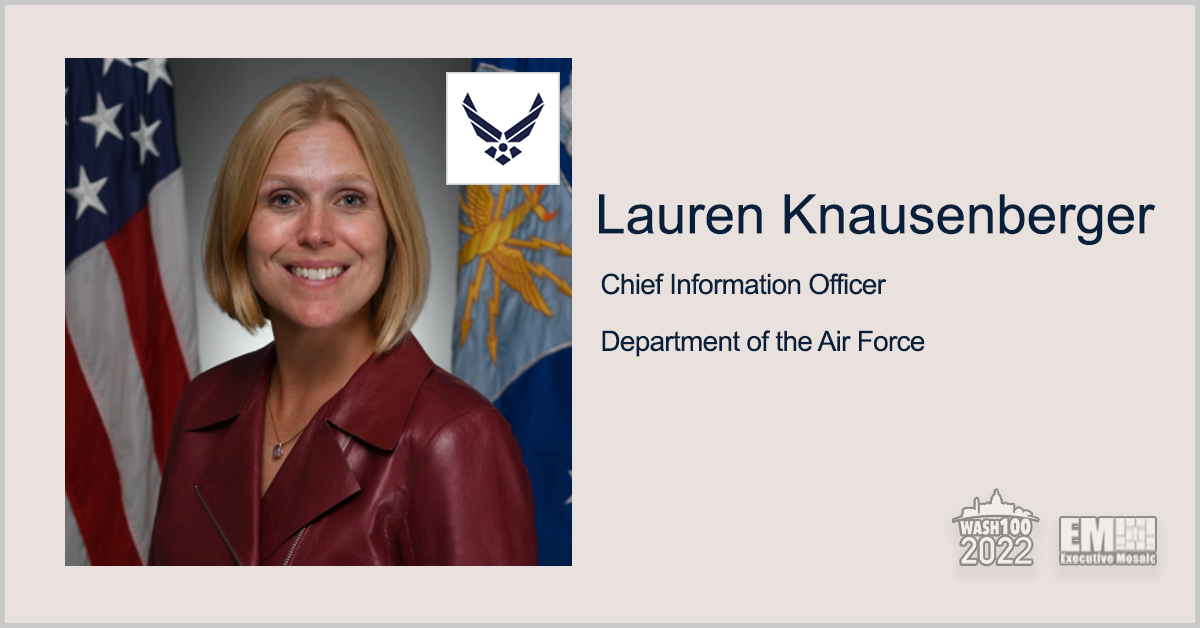Cyber and information technology objectives are so implicit in the U.S. Air Force’s current trajectory that some officials have been prompted to double check that these issues are still at the front of mind for the service branch’s highest ranking officials.
Lauren Knausenberger, chief information officer for the Department of the Air Force, assures both those in and outside of the force’s jurisdiction that cyber and IT concerns are a key aspect of most if not all of the operational imperatives laid out by Secretary Frank Kendall.
At a fireside chat conducted during the recent, annual Potomac Officers Club Air Force Summit, Knausenberger told audiences she was contacted by a three-star general at the start of the OI rollout wondering where cyber was in the directives.
While at first glance, OI 7– which Knausenberger described as being centered on “pivoting to a wartime posture with a near peer adversary”– doesn’t seem to feature cyber elements, the USAF CIO stressed that this was not the case.
“The entire operational imperative… had to do with infrastructure, with data, with cybersecurity, with making sure that our operators can see our environment, that they can take fast action, that we can get data anywhere in the world to help our operators make decisions,” Knausenberger said.
The executive, who is a two-time Wash100 Award winner, additionally shared with her interviewer, retired Major General Mike “Boe” Boera — now a vice president and Air Force strategic account executive at Leidos — that the Department is looking to announce its award for wave one of the enterprise IT project “any second now.”
She said this phase one of implementing an enterprise-wide system is fully funded and, thus, will be accepting applications from government contractors very soon. Included in the system will be an IT store that will contain options for various programs that airmen and service people frequently need, a tool that Knausenberger sees as essential to creating a more efficient IT environment.
It is the department’s goal, per Knausenberger, to have the money obligated for the enterprise IT wave one contract by the end of the fiscal year.
Knausenberger also told the Tysons Corner, Virginia audience that she hopes to see the Department of the Air Force’s POM, or program objective memorandum, approved and made public by August. The POM will lay out how the Department will use its budget over the coming years in part, to result in what Knausenberger predicts to be a healthier IT architecture by 2024.
When asked by Boera if there are any “game-changing capabilities” on the horizon for the Department within the POM or other rollouts, or if the future changes are just expected to be incremental, Knausenberger offered that while the growth and modifications may seem “boring” on their face, they are actually impactful and sweeping.
“Zero trust will be a game-changing capability. Having a common identity solution will be a game changing capability, getting everything into a global hybrid cloud; that in itself is a game changing capability,” Knausenberger said emphatically.
Calling for the help of the many industry members in attendance at the POC event, Knausenberger said she would like the department to improve its work with cloud-hosted software-as-a-service programs. She confirmed that she understood the frustration of companies having to receive multiple authorizations and accreditations through processes like FedRAMP and submitted that she feels there should be a more streamlined and open-access system.
“How do we allow you to make that investment yourself and provide your product in a way that we can consume it? That is something that I do want to figure out…because we are too slow right now in getting your capabilities rolled out,” the Air Force CIO resolved.
















